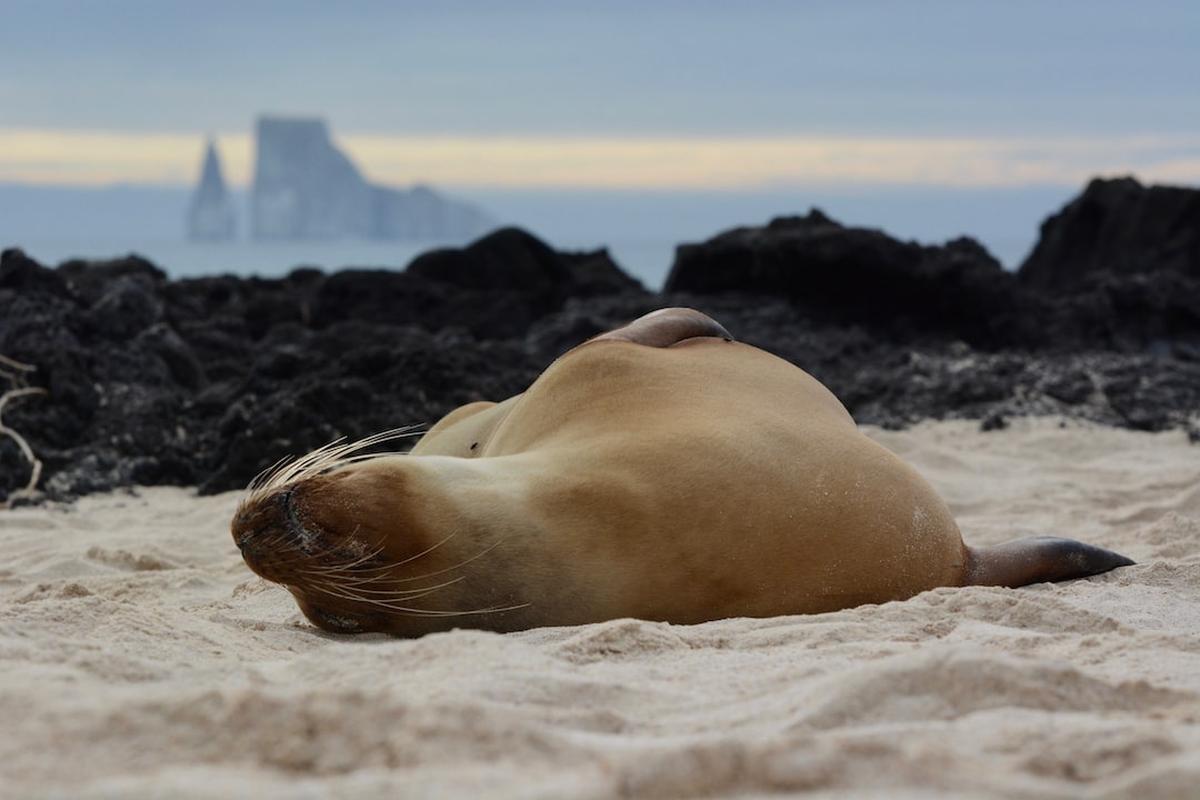Brief Overview of Galapagos
The Galapagos Islands, a volcanic archipelago in the Pacific Ocean, is renowned for its unique wildlife and pristine landscapes. A province of Ecuador, it is often considered a must-visit destination for nature enthusiasts and adventure seekers.
Importance of Food Safety While Traveling
While the Galapagos Islands offer an unforgettable travel experience, it is crucial to prioritize food safety during your visit. Foodborne illnesses can quickly turn a dream vacation into a nightmare. Therefore, understanding the food safety standards and practices in the region is a vital part of travel planning.
Understanding the Food Safety Concerns in Tropical Countries
Common Food and Water Contaminants in Tropical Regions
Tropical regions, including the Galapagos, often face unique food safety challenges. High temperatures and humidity can accelerate the growth of harmful bacteria and parasites in food and water. Contaminants such as E.coli, Salmonella, and Giardia are common in these regions and can cause severe health issues if ingested.
The Impact of Bacteria and Parasites on Health
Ingesting contaminated food or water can lead to foodborne illnesses, often characterized by symptoms such as diarrhea, vomiting, and fever. In severe cases, these illnesses can lead to dehydration, kidney failure, and even death. Therefore, it is crucial to be vigilant about food safety when traveling to tropical regions.
The Food Safety Landscape in Ecuador
Overview of Food Safety Regulations in Ecuador
Ecuador has established food safety regulations to protect consumers and promote public health. These regulations cover various aspects of food production, processing, and distribution, including hygiene practices, food handling, and labeling requirements. However, enforcement of these regulations can vary, especially in remote areas like the Galapagos.
Common Foodborne Illnesses in Ecuador
Despite these regulations, foodborne illnesses are not uncommon in Ecuador. Traveler’s diarrhea, caused by consuming contaminated food or water, is the most common illness among travelers. Other prevalent foodborne illnesses include typhoid fever and hepatitis A, both of which can be prevented through vaccination.
Is Food Safe in Galapagos?
Analysis of Food Safety in Galapagos
Food safety in the Galapagos is generally comparable to the rest of Ecuador. While the islands’ remoteness can pose challenges in terms of food storage and sanitation, many restaurants and hotels in the Galapagos adhere to high food safety standards. However, risks can increase when consuming food from street vendors or in rural areas.
Prevalence of Foodborne Illnesses in Galapagos
Similar to mainland Ecuador, traveler’s diarrhea is the most common foodborne illness in the Galapagos. However, the risk of contracting more severe illnesses like typhoid fever or hepatitis A is relatively low, especially for travelers who have been vaccinated.
Common Sources of Food Contamination in Galapagos
Street Food and Local Eateries
While street food and local eateries can offer a taste of authentic Galapagos cuisine, they can also be potential sources of food contamination. This is often due to inadequate food storage and handling practices, as well as poor sanitation.
Seafood and Fish Markets
Seafood is a staple in the Galapagos diet. However, raw or undercooked seafood can harbor harmful bacteria and parasites. Additionally, fish markets can be a source of cross-contamination if they do not adhere to proper hygiene practices.
Fresh Produce and Marketplaces
Fresh produce, while nutritious, can also pose a risk if not properly washed or cooked. This is because fruits and vegetables can be contaminated with harmful bacteria or parasites from the soil or water in which they were grown.
Preventive Measures to Ensure Food Safety in Galapagos
Safe Food Handling and Preparation Practices
Ensuring food safety in the Galapagos involves adhering to safe food handling and preparation practices. This includes washing hands and surfaces often, avoiding cross-contamination, cooking foods to the right temperature, and refrigerating foods promptly.
Importance of Hydration and Safe Drinking Water
Staying hydrated is crucial, especially in the tropical climate of the Galapagos. However, it’s important to ensure that the water you drink is safe. Bottled water is the safest option, and it’s also advisable to use it for brushing teeth.
Traveler’s Guide to Eating Safely in Galapagos
Choosing Safe Places to Eat
Choosing where to eat is an important part of ensuring food safety. Opt for restaurants and hotels that have a good reputation for hygiene. Avoid eating food from street vendors or places where food is left out in the open.
Foods to Avoid and Safe Alternatives
Avoid raw or undercooked seafood, raw eggs, and unpasteurized dairy products. Instead, opt for cooked seafood, pasteurized dairy products, and fruits and vegetables that you can peel yourself.
Tips for Dealing with Food Allergies and Dietary Restrictions
If you have food allergies or dietary restrictions, communicate them clearly to your server or chef. Consider carrying a card that explains your dietary needs in Spanish, the local language in the Galapagos.
Medical Preparedness for Traveling to Galapagos
Vaccinations and Medications for Travelers
Before traveling to the Galapagos, consult with your healthcare provider about recommended vaccinations and medications. This may include vaccines for typhoid fever and hepatitis A, as well as medications for traveler’s diarrhea.
What to Do If You Get Sick: Seeking Medical Help in Galapagos
If you fall ill in the Galapagos, seek medical help immediately. There are clinics and hospitals on the main islands, and most hotels can provide assistance in finding medical care.
Conclusion
Recap of Food Safety in Galapagos
While the Galapagos Islands offer an unforgettable travel experience, it’s important to prioritize food safety during your visit. By understanding the food safety landscape in the region, choosing safe places to eat, and taking preventive measures, you can enjoy the local cuisine without worrying about foodborne illnesses.
Final Thoughts and Recommendations for Travelers
Traveling to the Galapagos is a unique opportunity to explore one of the world’s most biodiverse regions. However, ensuring food safety should be a key part of your travel planning. By being vigilant about what and where you eat, you can protect your health and make the most of your Galapagos adventure.
Frequently Asked Questions
Is it safe to eat street food in the Galapagos?
While street food can offer a taste of local cuisine, it can also pose a risk of foodborne illnesses. Therefore, it’s generally safer to eat at restaurants or hotels that adhere to high food safety standards.
What should I do if I get sick in the Galapagos?
If you fall ill in the Galapagos, seek medical help immediately. There are clinics and hospitals on the main islands, and most hotels can provide assistance in finding medical care.
Is the tap water safe to drink in the Galapagos?
Tap water in the Galapagos is not generally safe to drink. It’s recommended to drink bottled water and use it for brushing teeth as well.
What foods should I avoid in the Galapagos? Avoid
Avoid raw or undercooked seafood, raw eggs, and unpasteurized dairy products. Instead, opt for cooked seafood, pasteurized dairy products, and fruits and vegetables that you can peel yourself.
What vaccinations do I need before traveling to the Galapagos?
Consult with your healthcare provider about recommended vaccinations before traveling to the Galapagos. This may include vaccines for typhoid fever and hepatitis A.
How can I ensure food safety in the Galapagos?
Ensure food safety by choosing safe places to eat, adhering to safe food handling and preparation practices, and staying hydrated with safe drinking water.
References:
- Centers for Disease Control and Prevention. (2018). Food and Water Safety.
- World Health Organization. (2017). Food Safety in Developing Countries: An Overview.
- Ecuador Ministry of Public Health. (2019). National Food Safety Regulations.
- Galapagos Conservation Trust. (2020). Travel Advice: Health and Safety in Galapagos.








